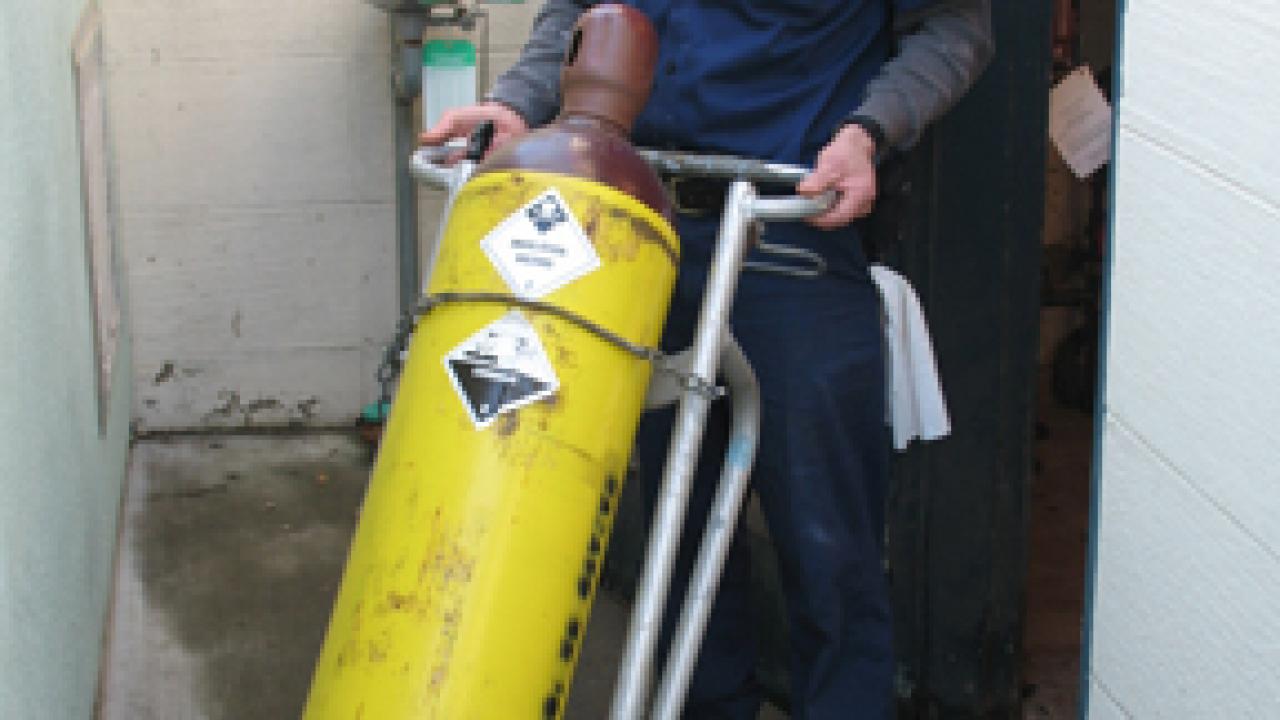UC Davis reached a "huge public safety milestone" recently when a chemical company hauled off a dozen cylinders of chlorine gas from Rec Pool and Hickey Pool.
In a project that stretched across 16 months, the university outfitted both swimming pools with disinfection systems that use liquid chlorine, considered much safer than gas.
"If there had been an accident, the old systems could have released chlorine gas, and that is extremely hazardous, even deadly," said Michael Lindquist, project manager for Facilities Management (proposed new name of Operations & Maintenance).
Liquid gas, on the other hand, "is basically the same kind of bleach that you have at home," Lindquist said. If it spills, it does not immediately let off gas — meaning that there is no risk of a dangerous cloud of gas being released into the air.
Liquid chlorination systems have become the industry standard for safety, Lindquist said. The campus's Schaal Aquatic Center opened a little more than four years ago with a liquid chlorination system in place.
Rec Pool and Hickey Pool are older, with the Rec Pool dating to 1966 and Hickey Pool to 1938.
Making the switch from gas to liquid chlorine at the pools took on added importance with construction of a new child-care center near the Rec Pool, putting the children in harm's way, potentially.
At Hickey Pool, just across the street from the Memorial Union near the center of campus, the chlorine gas posed a risk to the thousands of students, faculty and staff who frequent the area daily.
With the chlorination project construction finally completed and both of the new systems online last week, the university called in Sierra Chemical Co. to retrieve six gas cylinders from the Rec Pool and six from Hickey Pool.
When full, each cylinder holds 150 pounds of pressurized chlorine.
"As most of you realize, this is a huge public safety milestone for the campus," David Phillips, interim director of the university's utilities division, said in a Feb. 7 e-mail to various campus officials.
To securely house the new liquid chlorine tanks, Chris Adamson of the university's Architects & Engineers unit designed new buildings for each pool. For the exterior of the Hickey Pool add-on, clearly visible from North Quad Avenue, he made sure to match the style of the concrete-tile wall that surrounds the 70-year-old swimming pool.
Phillips credited Richard Keating of Facilities Management for building the new chlorine injection and control systems, and pool operator Kirk Shaake for operational support.
The injection process relies on what officials described as "a passively safe principle" — suction. So, if there is a leak, the suction stops and the chlorine stops flowing, Lindquist said. A pump would keep pumping, despite the leak.
Said Phillips: "This type of system nearly eliminates the potential for an accidental discharge of chlorine and greatly reduces the risk to the university community."
Another safety factor is built into the tanks — they are double-containment tanks, one inside the other, with the outer tank designed to hold the liquid if it manages to leak from the inner tank.
Each chlorine injection system, in its entirety, is visually inspected every day.
The new systems eliminate the need for frequent handling of chlorine gas cylinders, changing them out as they run out of gas. With less handling of chlorine, there is less risk of an accident.
Media Resources
Clifton B. Parker, Dateline, (530) 752-1932, cparker@ucdavis.edu
